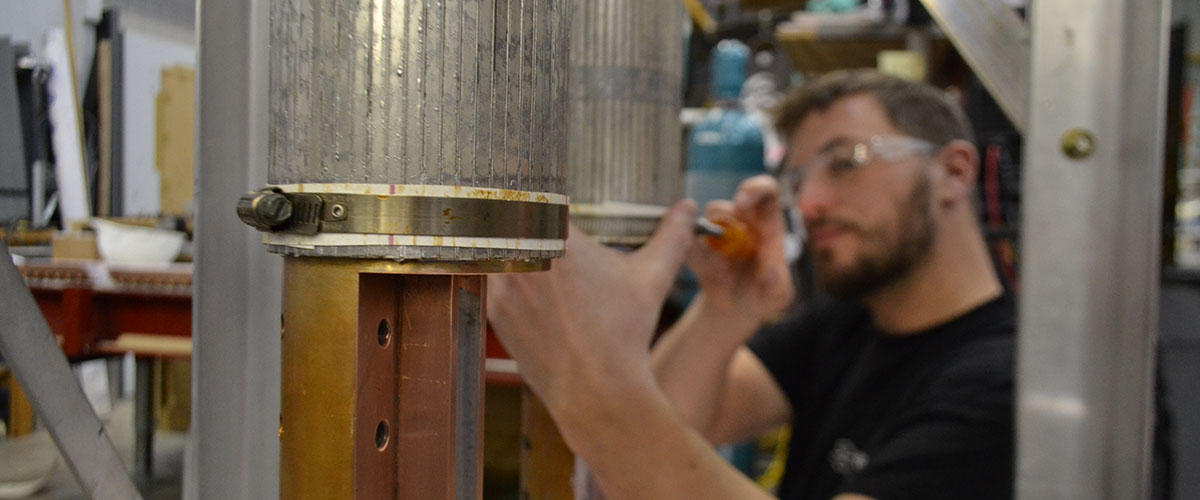In electronics, a lead is an electrical connection made of metal used for various purposes, including transferring power. At the National MagLab, all our magnets have current leads connecting the magnet to its power source.
For our resistive magnets — electromagnets made of coils of copper-silver — the leads are fairly straightforward. They transfer huge amounts of electricity – up to 30 megawatts – to the coils, which then generate world-record magnetic fields.
For the lab's superconducting magnets, the idea is the same. But the execution is more complicated.
Superconducting magnets are made of superconductors — special materials that conduct electricity extremely efficiently and without friction. So, unlike resistive magnets, superconducting magnets don't produce heat. They also can't tolerate heat; in fact, they only operate at extremely low temperatures. So-called "high-temperature" superconductors need to be at -195 degrees Celsius (-320 degrees Fahrenheit) to work. If that's not cold enough for you, "low-temperature" superconductors require a mind-numbing -268 degrees Celsius (-450 degrees Fahrenheit).
For the superconducting magnet being developed for the MagLab's new 36 tesla Series Connected Hybrid (SCH) magnet, our engineers needed to design and build leads that would take 20,000 amps of sizzling current, remove most of the heat, and deliver the "cooled current" to the magnet.
The result: two 10 foot-long, meticulously engineered poles that combine copper, a superconductor and a frigid stream of liquid nitrogen. Although they seem simple enough from the outside, these leads represent state-of-the-art superconducting technology and years of planning and testing.
As shown in the illustration in the image gallery below, at the top of the lead, incoming current passes first through a conventional copper conductor, then through a high-temperature superconductor (bismuth strontium calcium copper oxide, or BSCCO), then through more copper (the lead's cold terminal) and finally into the magnet via a fixed jumper cable (both made of the low-temperature superconductors niobium tin and niobium titanium). The temperature differential between the top and bottom of the lead is more than 260 degrees Celsius (500 degrees Fahrenheit). If the cold terminal were any warmer, the superconducting wires in the magnet and jumper cable would not work.
Liquid nitrogen, at about -195 degrees Celsius (-320 degrees Fahrenheit), is the fancy refrigerant used to cool things off. Pumped into the middle of the lead, it passes through a flower-shaped hole in the current-carrying copper tube; the floral design maximizes the amount of surface area the liquid touches and thus its cooling power. As the liquid absorbs heat from the copper, it burns off into a gas that, still quite cold, rises to cool off the portions of copper conductor above it.
The leads are a critical part of the SCH system, but scientists believe it's worth it. This new 36 tesla magnet, slated to be finished in 2015, is expected to break the record for field homogeneity, enable new science with a magnetic field that is both very high and very stable, and operate much more cheaply than comparable magnets.
By Kristen Coyne



